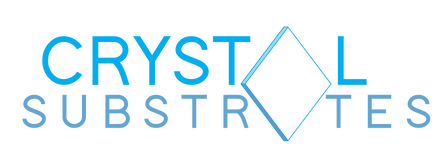Include Product Page GGG_Material Information
Gadolinium Gallium Garnet (GGG, Gd3Ga5O12) is a colorless synthetic crystalline material of the garnet group, with good mechanical, thermal, and optical properties. It has cubic lattice, density 7.08 g/cm3 and Mohs hardness is variously noted as 6.5 and 7.5. Single crystals are made by Czochralski method and can be made with addition of various dopants for modification of color. It is used in fabrication of various optical components and as substrate material for magneto–optical films (e.g YIG and YAG).
Garnets are an interesting group of materials with the general formula of X3Y2(XO4)3. The X site is usually occupied by divalent cations (Ca, Mg, Fe, Mn)2+ and the Y site by trivalent cations (Al, Fe, Cr)3+ in an octahedral/tetrahedral framework with [XO4]4− occupying the tetrahedra. For GGG, the formula can be written as Gd3Ga5O12 or in Gd3Ga2(GaO4)3.
Interesting magnetic properties arise when the appropriate elements are used on the X and Y site in synthetic garnets. A garnet of significant scientific interest is yttrium iron garnet (YIG), Y3Fe2(FeO4)3, the five iron(III) ions occupy two octahedral and three tetrahedral sites, with the yttrium(III) ions coordinated by eight oxygen ions in an irregular cube. The iron ions in the two coordination sites exhibit different spins, resulting in magnetic behavior. YIG is a ferrimagnetic material having a Curie temperature of 550 K. Yttrium iron garnet can be made into YIG spheres, which serve as magnetically tunable filters and resonators for microwave frequencies.
YIG is difficult and expensive to grow as single crystals so in the lab, and as many experiments will want to substitute X and Y sites e.g. for BixY3-xFe5O12 or Ce1Y2Fe5O12 this would further complicate the growth process so GGG is used as a substrate and YIG is grown as a thin film with the required dopants coming included in the target.
Another material which is studied using GGG substrates is Yttrium Aluminium Garnet (YAG, Y3Al2(AlO4)3). When doped with neodymium, erbium or gadolinium, YAG can be used as a lasing medium. Nd:YAG, Er:YAG and Gd:YAG lasers are used in medical procedures including laser skin resurfacing, dentistry, and ophthalmology.
In pulsed laser deposition, GGG readily supports growth of YIG and YAG at moderate temperature (500-700 ºC) in oxygen background of 100-200 mTorr. The most common substrate for growing YIG is GGG (111) which stabilizes epitaxial growth of YIG 111
So stop your yappin’, buy some GGG and get YAGin’!
